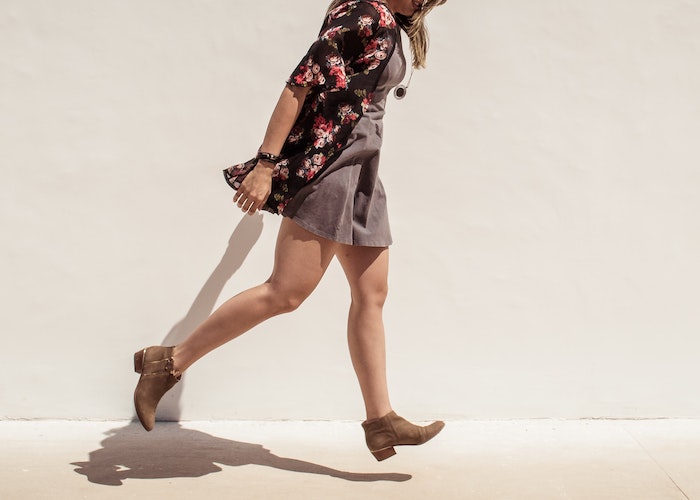12 Pre- and Post-Baby Money-Saving Tactics I’ve Learned While Pregnant

There’s no denying it: pregnancy can be expensive. The cost of doctor’s visits, supplements, scans, blood tests, and maternity clothes can be shockingly high, even if you have great health insurance. And this is before you start buying the furniture, clothes, monitors, etc. that your baby will need when he or she arrives. I’m currently 18 weeks pregnant, and I have learned a lot in the past few months about how to manage these costs without throwing money down the drain. Here are the key pieces of advice I would give to women on how to minimize pregnancy costs:
1. If you can plan ahead, do so. Before you start trying to fall pregnant, get health insurance that will rebate a large percentage of maternity-related expenses. The percentage covered can make a big difference to your out-of-pocket. At 18 weeks, I’ve already spent over $9,000 ($6,456.24 USD) just on doctor’s bills, but my insurance rebates 90% of that. As always, read the fine print to make sure there are no exclusions that could cost you. Some insurers don’t cover fetal chromosomal testing, for example, which can cost thousands of dollars (in my case, $2,500 — $1,793.40 USD — which was thankfully covered). Some insurers might also offer a discount on your monthly rate if you sign up before you turn 30. If your pregnancy is unplanned and you’re uninsured, try to get insurance that doesn’t categorize pregnancy as a pre-existing condition and charge much higher premiums. Or, find out if you’re able to access free or heavily subsidized maternity care. In some countries (Australia, UK, Canada) this is a given, but in the U.S., access to Medicaid is means-tested.
2. Do some research on which skilled and well-priced OBGYNs are in your local area. Do this before you visit your GP for the first time (which usually happens at 10 weeks). If you don’t have a preferred OBGYN in mind, your GP will just refer you to someone they recommend, who may be more expensive. Join “new mothers” groups on Facebook, and ask for recommendations from women who’ve recently given birth. You want to make sure the OBGYN you choose has the necessary credentials and years of experience, but you also want to avoid the ones with the super-fancy offices. Those freshly cut roses and Chesterfield couches in reception? You’ll be helping to pay for those.
3. Before you visit your OBGYN for the first time, figure out if you want to give birth at a private hospital. If you don’t, make sure he/she will deliver in a public hospital. If not, find another suitable OBGYN who will. The price difference between public vs. private can be enormous (>$15,000/$10,760.40 USD), and you should know from the outset what your options are.
4. If your OBGYN dispenses prescribed supplements or drugs, before you buy, check how much they cost at your local pharmacy or drug store. Some doctors add enormous markups to the drugs they dispense. My doctor doesn’t do this, but one of my girlfriends found out that a drug she’d paid $257 ($184.36 USD) for at her OBGYN’s office cost only $15 ($10.76 USD) at her local pharmacy. It can pay to check.
5. Wait until you really start to show before you buy maternity clothes. Every body is different, of course, but you may find that you don’t need to buy maternity clothes until you reach week 20, or even later. If you buy clothes in advance thinking you’ll need them sooner, you may waste money on things that don’t end up suiting the weather. Clothing extenders and “belly bands” can also help you eke a few more months of wear out of your pre-pregnancy clothes.
6. Try to buy a few key pieces that will grow with you. This advice is particularly relevant for your work wardrobe — look for staples that you can build an outfit around using items from your pre-pregnancy wardrobe, like trousers and skirts that have hidden stretch waistbands, or dresses that you can wear from when you start really showing until the very end. If you wear heels everyday, you may find this becomes too painful by about the fourth or fifth month, so make sure you buy clothes you can wear with flats without having to get them tailored first.
*****
Like pregnancy expenses, some baby expenses are pretty unavoidable. Unless you have extremely generous friends and family, you’ll likely have to buy a lot of things that your baby will need from the moment they arrive in the world. In my experience there are, however, some smart ways to buy:
7. When it comes to furniture, don’t wait ‘til the last minute. A lot of places will have to order in nursery furniture for you, especially if you want it in a particular color. This can take a couple of months, in some cases. If you wait too long, you may have to buy whatever they have in stock, which may be more expensive.
8. A lot of mothers’ groups on Facebook have dedicated second hand sales pages, or organize semi-annual second hand sales events. Join these groups to see what members are selling — you may be able to find good quality used nursery furniture, baby clothes, monitors, etc. Expat mothers groups can also be a gold mine: when expats leave their host country, they often sell much of their furniture to save shipping it back home. But be careful when buying anything secondhand: kids can be germ factories, so don’t buy things that can’t be easily sterilized. Also, make sure all items meet federal safety requirements before you buy.
9. Be careful when buying cheap baby clothes online. That $3.50 romper may look really cute, but it will probably fall apart after a couple of washes. Before you buy, read the reviews to see what others have said about wear and tear.
10. Don’t let “mommy shaming” influence your decisions. Someone tried to shame me a few weeks ago for asking on a mothers’ forum how many clothes a baby really needs in the first three months, insinuating that I wasn’t going to provide for my baby, and suggesting that I should buy a “whole wardrobe” of clothes for my daughter-to-be. But I have no desire to buy a whole bunch of clothes that either won’t be used, or will be easily ruined by vomit, poonamis, etc. Ask mothers you know in your area about the things they couldn’t live without, and the things they regret buying. This will show you what’s vital and what isn’t. Where I live (Singapore) has a very hot climate year-round. The mothers I’ve asked said that for the first three months, my baby will only need the following clothing: five onesies, three night gowns, two zipper swaddles, five rompers, one cardigan, one Hug-a-Bub, seven muslin cloths (for burping) and a couple of pairs of booties. This is much less than I’d expected, and I’m so glad I asked before I went out and bought too much.
11. Just because you can afford to buy it, doesn’t mean you should. As a former poor kid who lived in hand-me-downs and second-hand clothes until I was 14 and got my first weekend job, I have a strong desire to buy my baby the best of everything, simply because I can afford to (a privilege I fully acknowledge). But I also know how pointless and wasteful that would be. Is my daughter going to know that she’s wearing a $95 Stella McCartney romper? No, and she will likely grow out of it in about five weeks. While I’ll be very happy to buy my kid special clothes every now and then, I’m not going to go all out all the time.
12. And finally, if people ask what you need, don’t be afraid to be specific. This is advice I got from a girlfriend who recently gave birth. If you’re not specific about what you need, you may end up with gifts of baby clothes that don’t fit, toys that aren’t age-appropriate, or boxes of diapers in the wrong size. Think about it this way: if friends and family want to buy your baby a gift they’ll be much happier if it’s something that actually gets used.
Yolande is a responsible mining and sourcing expert by day and a writer by night. She reads far too much true crime, and arguably eats more saltwater taffy than any other Australian. You can follow her on Twitter.
Image via Unsplash




